I finally tried the notorious Nattō, a Japanese delicacy of fermented soybeans. Nattō usually accompanies Asagohan, a traditional Japanese breakfast, but it can also be eaten with a bowl of rice or even as is. I had it for the first time in CIBI, a so-called Japanese breakfast cafe in Melbourne. Their Ultimate breakfast option came with a side of Nattō and some other thing for $6 extra, and I surprised myself when I asked for it.
Nattō
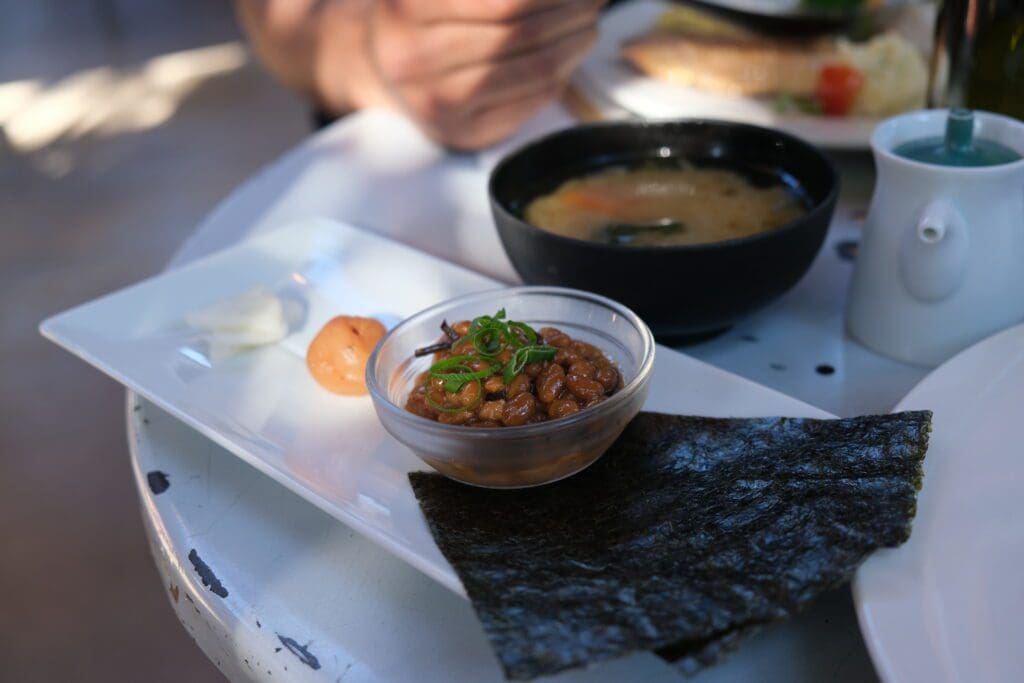
Even though I’d like to call myself adventurous, especially when it comes to eating unusual food – I had never actively sought Nattō since I learned about it.
The reason? Well.. because Nattō has always been decrypted so unappetizingly: sad-looking brownish-coloured beans, all gooey and sticky, which apparently also have a pungent odour. Not something you’d want to eat, let alone for breakfast, in Japan, where the delicious choices are endless.
But today, the curiosity got the better of my rarely-appearing cautious side. Fifteen minutes later, I was staring at a plate of what CIBI cafe called the Ultimate Asa Gohan.
Cibi Ultimate Asa Gohan
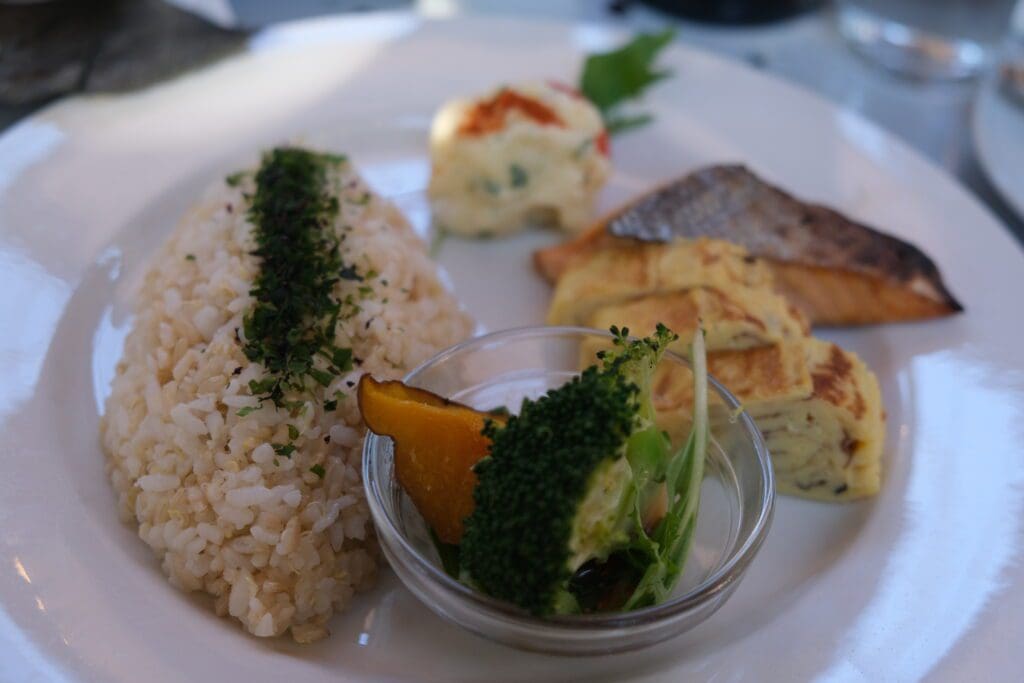
Before I tell you all about the Nattō part, let’s talk about the rest of the Japanese breakfast.
The breakfast wasn’t served on a typical Japanese rectangular wooden tray, and I would have let it go if the cafe wasn’t also a shop that sells Japanese products, including dinnerware. Instead, it was served on a basic-B white plate.
The rice wasn’t fresh and fluffy. It wasn’t even just a bowl of plain white rice. Instead, it was shaped in Omurice style with garnish on top. What?? It’s accompanied by a piece of flavourless salmon, three pieces of Tamago and a blob of mashed potato. Then there was a tiny bowl of sad single broccoli and a slice of miso-glazed sweet pumpkin. At least the miso, served on the side, tasted good.
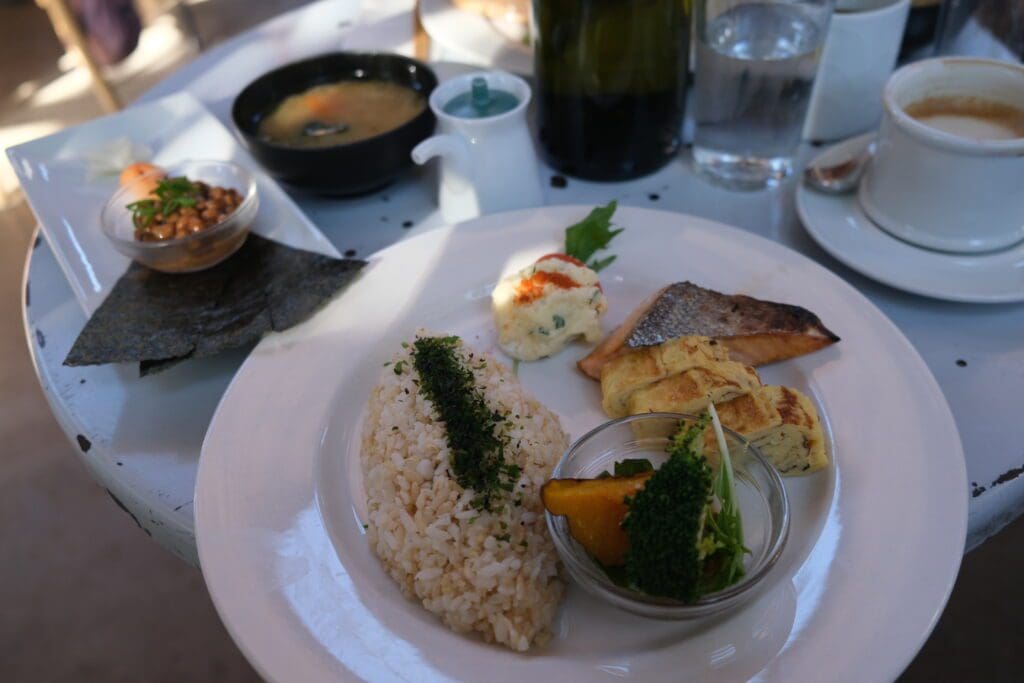
The Ultimate Breakfast came with an additional platter. On it: a small bowl of Nattō, three small sheets of Nori, a plum pickle and four tiny pieces of daikon pickle.
The Taste of Japanese Nattō
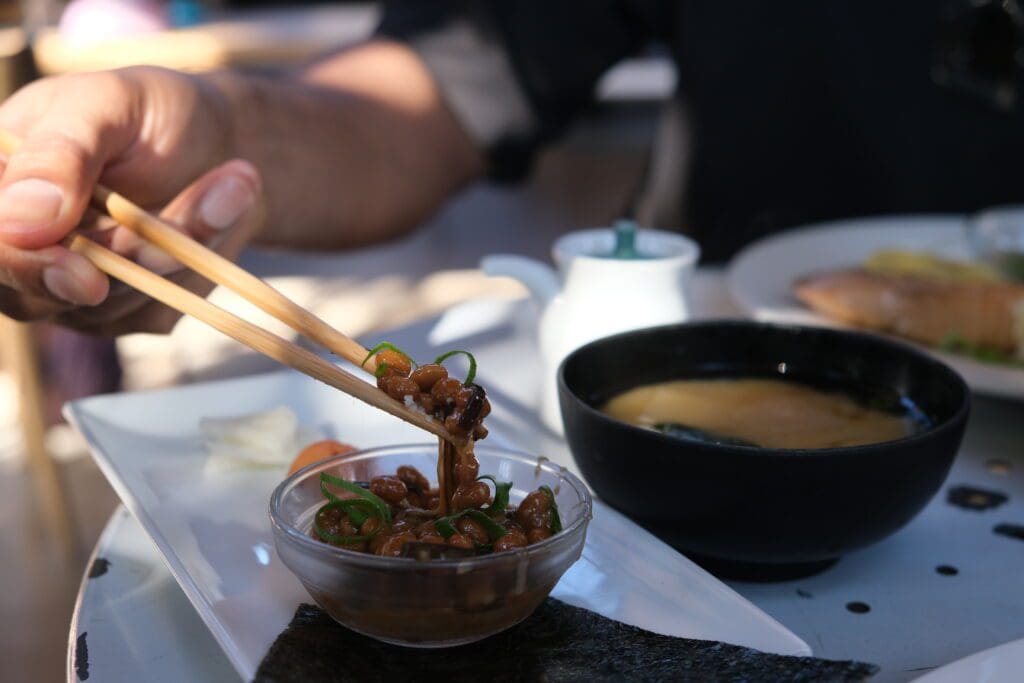
Now back to the Nattō, I scooped it with my chopstick and brought it to my nose, anticipating an overpowering smell, but nothing. I then put the rice and ate it. It didn’t taste much, adding some umami-ness to the terrible deception of Japanese breakfast rice. So I took another scoop of it and ate it directly. That’s when I finally got the flavour. And it tasted good! I regret not trying it sooner, deterred by what I have been reading online. Now I can’t wait to eat the OG version of it in Japan.
Indonesian “Nattō“
Nattō also reminded me of Tauco, preserved fermented yellow soybeans, a common ingredient in Medanese- Indonesian cooking e.g. Prawn Tauco. Tauco is used as a flavour enhancer which is quite similar to the function of Nattō for Japanese food. The only difference is we don’t eat Tauco as is.
Follow me on Instagram @KultureKween for more recent updates.
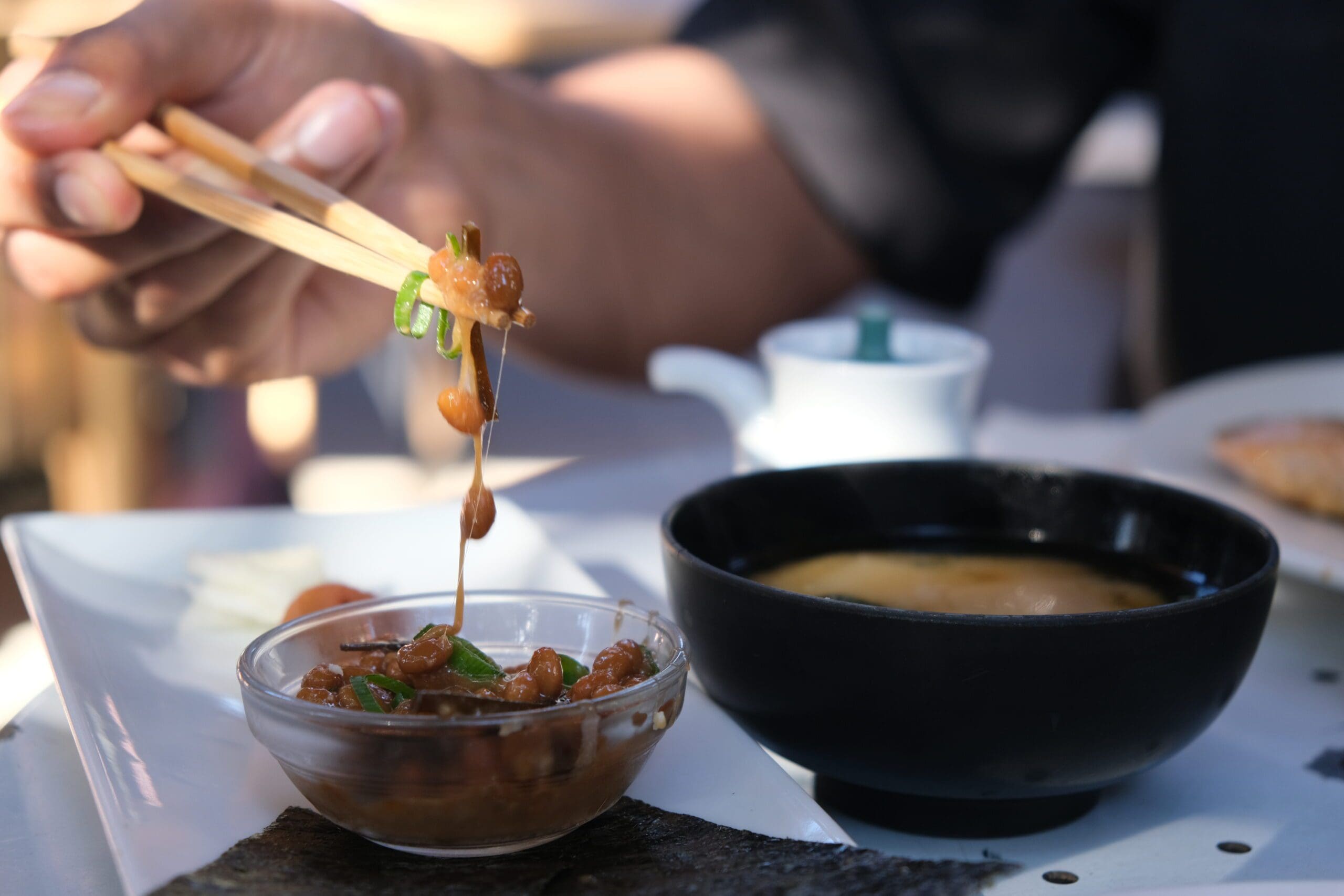
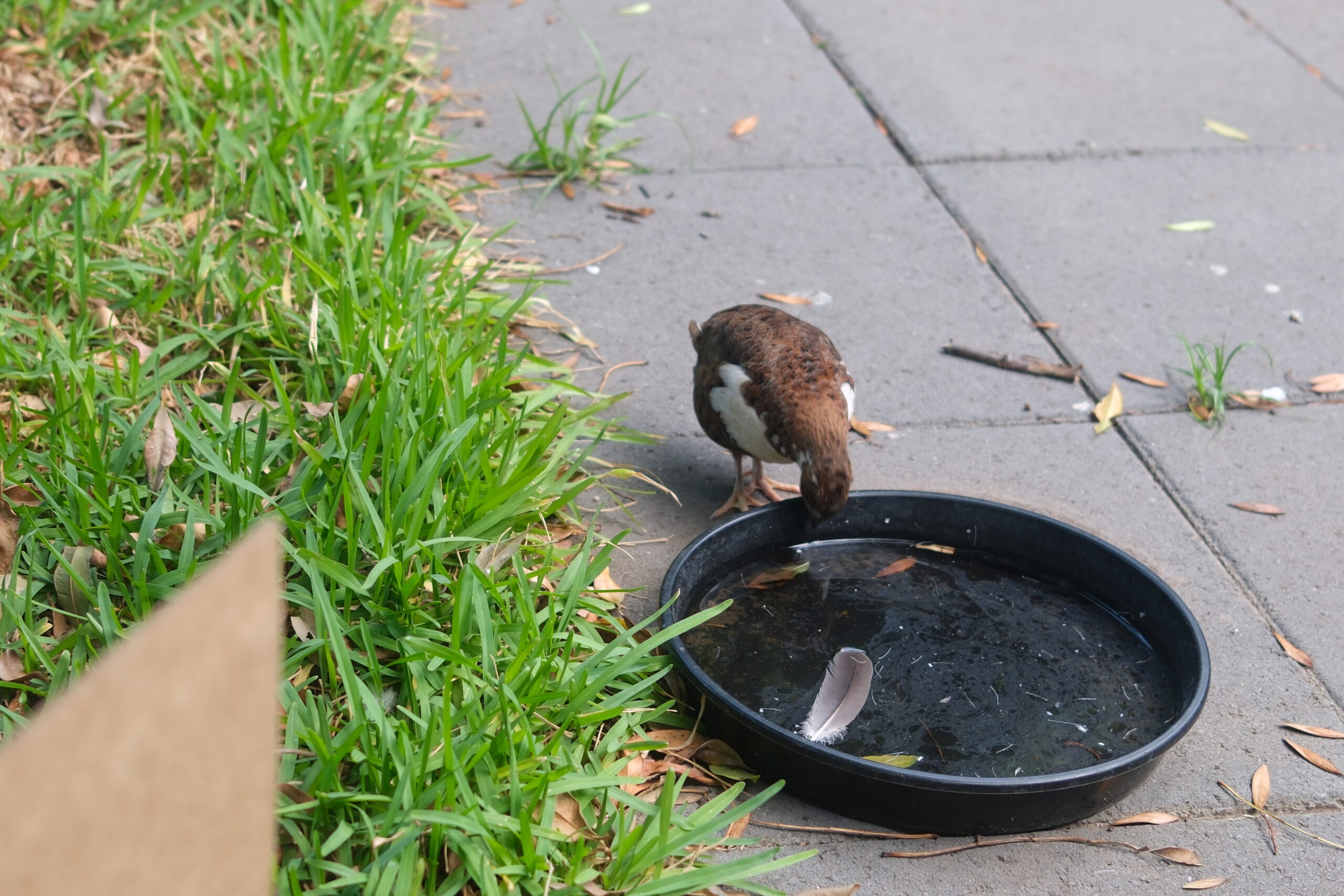

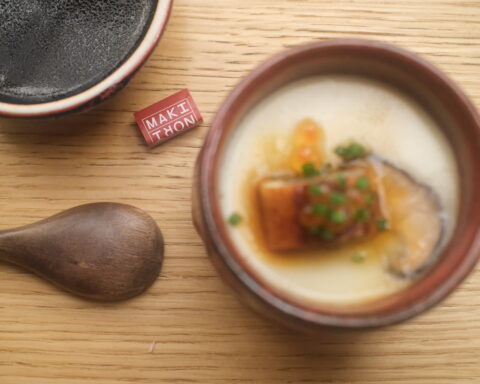

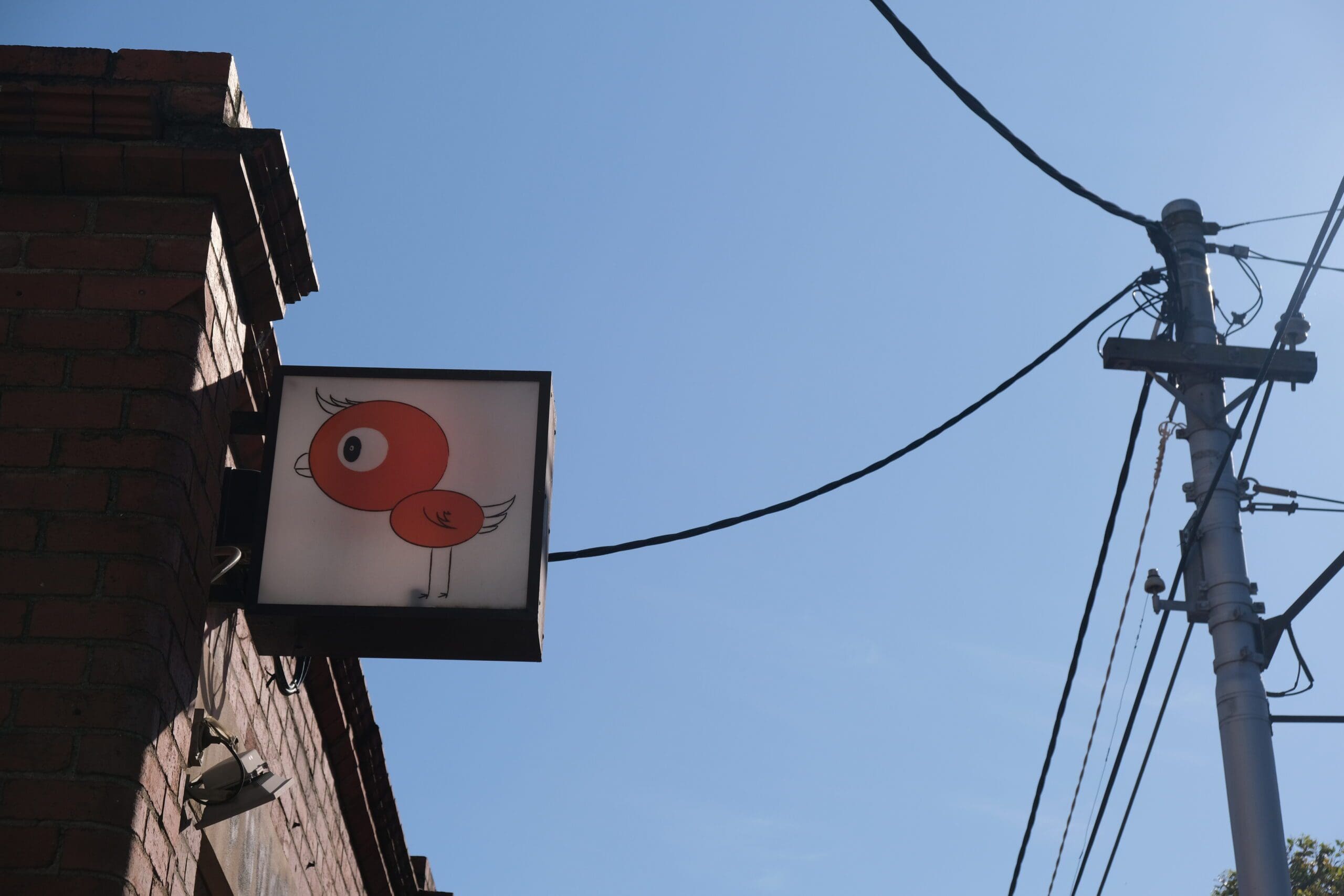
I had high expectations from CIBI 🙁